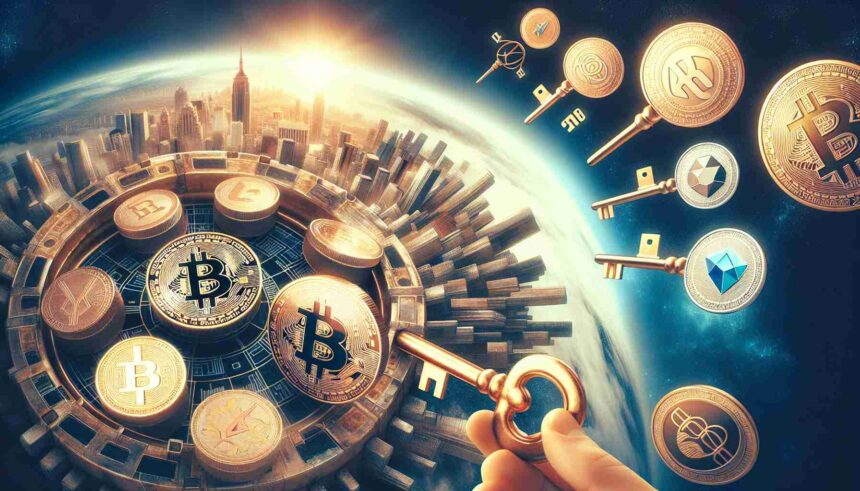Cryptocurrency has revolutionized the financial landscape, with Bitcoin leading the charge. However, beyond Bitcoin, a vast ecosystem of alternative cryptocurrencies, known as altcoins, has emerged, offering diverse use cases and innovations. This article delves into the world of altcoins, their significance, and how they are shaping the future of digital finance.
Understanding Altcoins and Their Purpose
Altcoins, or alternative cryptocurrencies, refer to all digital currencies apart from Bitcoin. While Bitcoin was designed primarily as a decentralized form of digital money, altcoins aim to improve upon its limitations or introduce unique functionalities. These cryptocurrencies leverage blockchain technology to offer enhanced transaction speeds, privacy, smart contracts, and scalability.
Many altcoins were developed to address specific issues within the crypto ecosystem. Some focus on reducing transaction fees, while others prioritize security and decentralization. Understanding the different categories of altcoins can help investors and users make informed decisions when exploring this dynamic market.
Categories of Altcoins
Altcoins can be categorized based on their underlying technology and intended use case. Some of the most prominent categories include:
Stablecoins
Stablecoins are designed to minimize volatility by being pegged to stable assets like the US dollar or gold. Examples include Tether (USDT), USD Coin (USDC), and Dai (DAI). These cryptocurrencies provide a bridge between traditional finance and the crypto space, making them a preferred choice for traders and investors seeking stability.
Privacy Coins
Privacy-focused altcoins emphasize anonymity and confidentiality in transactions. Monero (XMR), Zcash (ZEC), and Dash (DASH) are notable examples. These cryptocurrencies use advanced cryptographic techniques to obfuscate transaction details, ensuring greater financial privacy for users.
Utility Tokens
Utility tokens serve a specific function within a blockchain ecosystem. Ethereum (ETH), Binance Coin (BNB), and Chainlink (LINK) are widely used for various decentralized applications, smart contracts, and transaction fees. These tokens enhance blockchain functionality and enable seamless interactions within decentralized networks.
Meme Coins
Meme coins, such as Dogecoin (DOGE) and Shiba Inu (SHIB), started as internet jokes but have gained popularity due to community-driven hype and social media influence. While many lack intrinsic value, they have demonstrated the power of collective enthusiasm in shaping crypto markets.
Governance Tokens
Governance tokens allow holders to participate in decision-making processes within decentralized autonomous organizations (DAOs) and DeFi platforms. Examples include Uniswap (UNI) and Aave (AAVE). These tokens grant voting rights, enabling users to influence protocol upgrades and policies.
The Role of Altcoins in Decentralized Finance (DeFi)

Decentralized Finance (DeFi) has become one of the most significant trends in the cryptocurrency industry. Altcoins play a crucial role in DeFi applications, providing users with decentralized lending, borrowing, and trading solutions. Platforms such as Uniswap, Compound, and Synthetix utilize altcoins to facilitate financial transactions without intermediaries.
DeFi altcoins empower individuals by granting access to financial services that were previously limited to traditional banking institutions. They contribute to a more inclusive financial system by eliminating barriers such as credit scores and geographical restrictions.
Investing in Altcoins: Opportunities and Risks
While altcoins present lucrative investment opportunities, they also come with inherent risks. The volatility of these digital assets can lead to significant price fluctuations, making them suitable for risk-tolerant investors.
Before investing in altcoins, it is essential to conduct thorough research. Factors such as market capitalization, project utility, development team credibility, and community support should be considered. Diversifying a crypto portfolio with a mix of stablecoins, utility tokens, and high-potential projects can help mitigate risks.
The Future of Altcoins
The altcoin market is constantly evolving, with new projects emerging to address the limitations of existing cryptocurrencies. Innovations such as layer 2 scaling solutions, interoperability protocols, and eco-friendly consensus mechanisms are shaping the future of digital assets.
As adoption increases, regulatory developments will play a pivotal role in determining the sustainability of altcoins. Governments and financial institutions are paying closer attention to the crypto industry, which may lead to clearer guidelines for market participants.
Conclusion
Altcoins have transformed the cryptocurrency landscape by introducing a diverse range of digital assets with unique functionalities. From stablecoins providing stability to DeFi tokens revolutionizing finance, altcoins continue to push the boundaries of blockchain technology. As the industry grows, staying informed about emerging projects and market trends will be key to making the most of the opportunities within the expanding world of altcoins.
